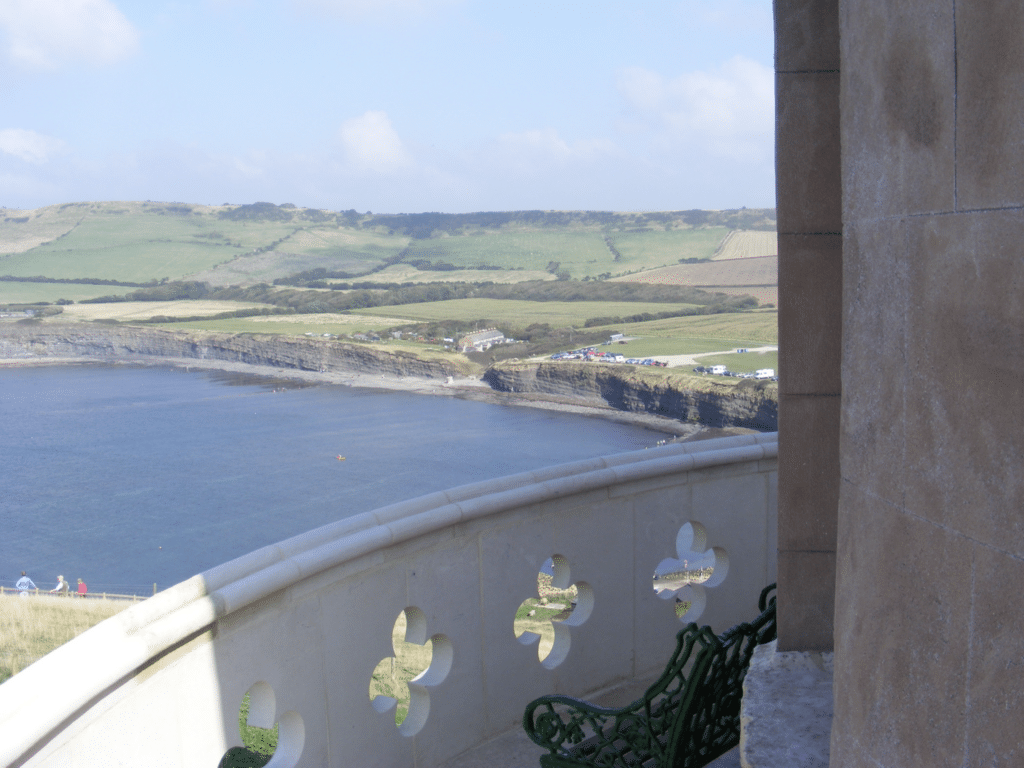Moving west from St Aldhelm’s Head the coast cuts north to form Chapman’s Pool. Here the Kimmeridge Clay is at sea level and erosion exposes interesting fossils, especially ammonites. These extinct creatures are related to Nautilus which can still be found in modern oceans but have survived for around 400 million years with little change. Ammonites lasted less than 150 million years because they evolved quickly but then died out (Jurassic and Cretaceous). The pictures below are of an ammonite found in the Kimmeridge Clay at Chapman’s Pool and modern Nautilus seen in the aquarium in Honolulu, Hawaii.


Due to the change in geology with the weaker Kimmeridge Clay exposed, the height of the coast drops as can be seen from Emmets Hill looking west to Houns-tout and Swyre Head.

The Kimmeridge Clay is exposed along the coast as far as Gad Cliff and has revealed some exciting fossil finds thanks to the diligence of local expert Steve Etches. Steve has lived in Kimmeridge for over 30 years and has become an internationally acknowledged researcher on Kimmeridge Clay fossils.

In 2016 his collection will be displayed in a Lottery supported museum in Kimmeridge. Above is one of Steve’s fossils, a ray preserved in great detail in the clay. The fossils are very well preserved because in the deeper waters of the Kimmeridge Clay sea there was little oxygen on the sea floor and so anything that died was not so likely to be eaten by scavengers and survived to become fossilised. The fine grained sediment of the Kimmeridge Clay helped to produce detailed preservation.
The coast east and west of Kimmeridge is spectacular but care must be taken when walking along the beaches to avoid being cut off by the rising tide. However there is always the S.W. Coast Path which runs from South Haven on the south side of Poole Harbour to Minehead in Somerset. The view below is of the coast east of Kimmeridge looking towards St Aldhelm’s Head in the distance. The rock dips gently to the east and is mostly clay with some beds of limestone which are paler in colour as seen in the picture. The limestone beds are slightly harder and form ledges which are well seen at Kimmeridge. Kimmeridge Bay is important as it is a marine reserve because of the exceptional marine flora and fauna that can be seen along the shoreline and further offshore.

In the picture below one of the ledges can be seen running out to sea and the relocated Clavell Tower is visible on the skyline. This was demolished and rebuilt in 2007-8 through the efforts of the Landmark Trust. It is available for short holidays if you want a room with a view!


Join us in helping to bring reality and decency back by SUBSCRIBING to our Youtube channel: https://www.youtube.com/channel/UCQ1Ll1ylCg8U19AhNl-NoTg SUPPORTING US where you can: Award Winning Independent Citizen Media Needs Your Help. PLEASE SUPPORT US FOR JUST £2 A MONTH https://dorseteye.com/donate/







